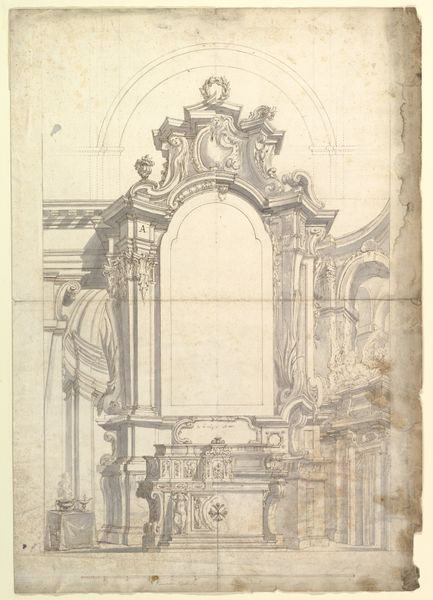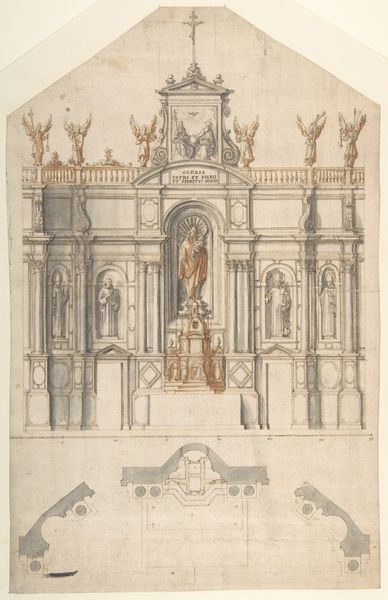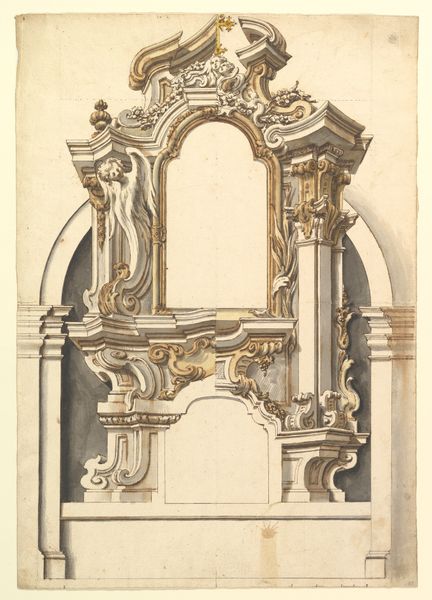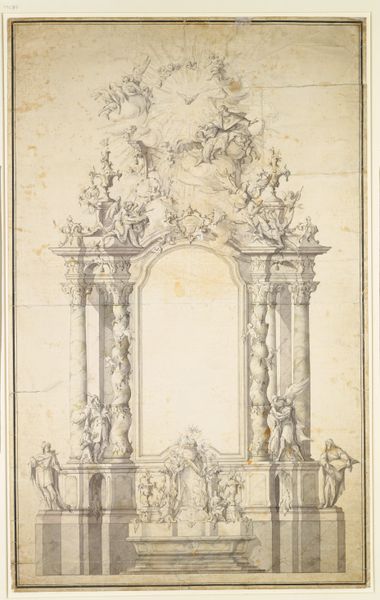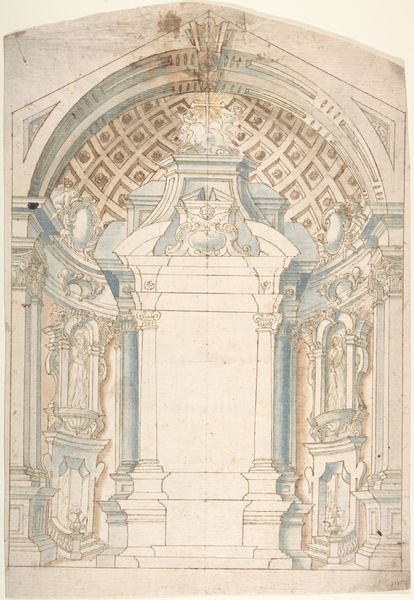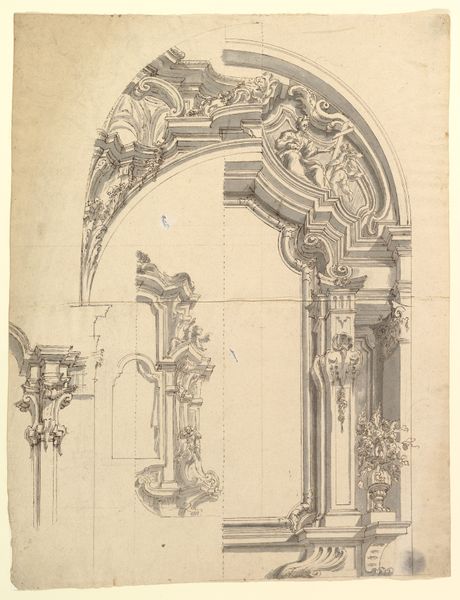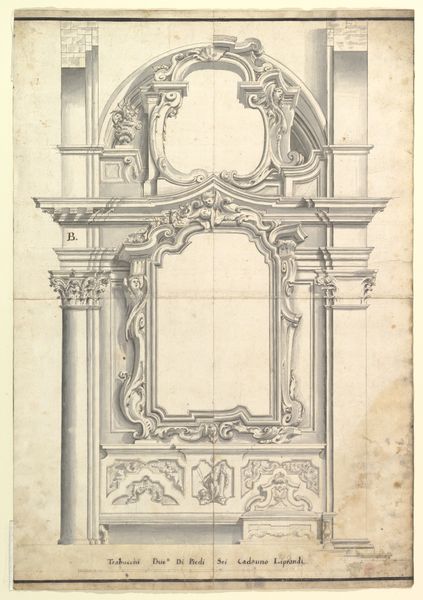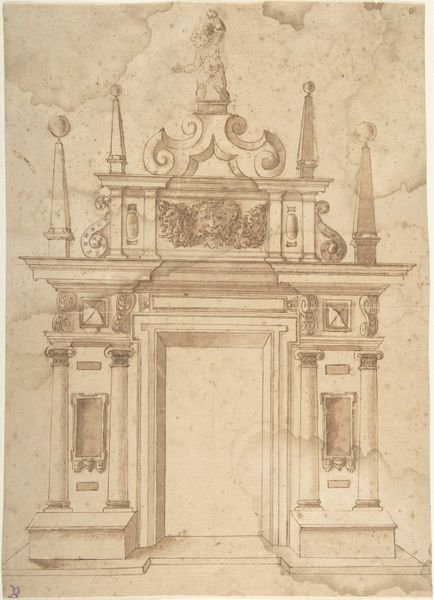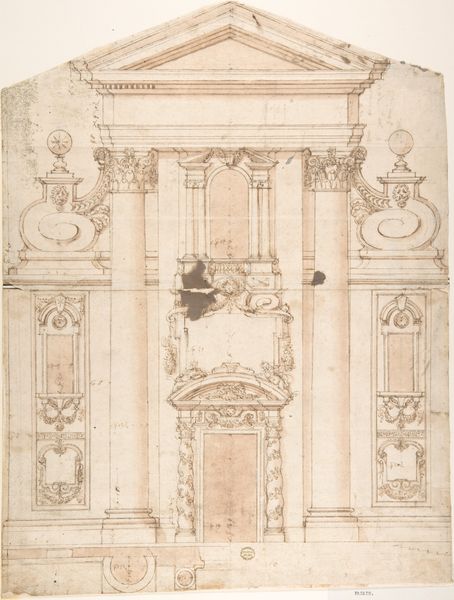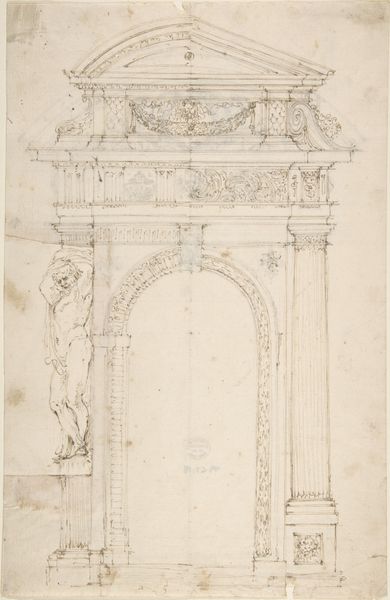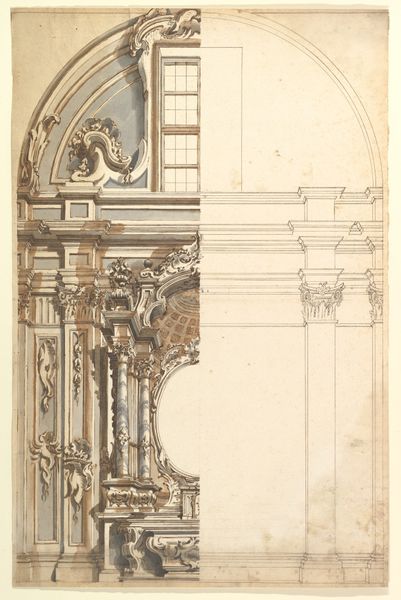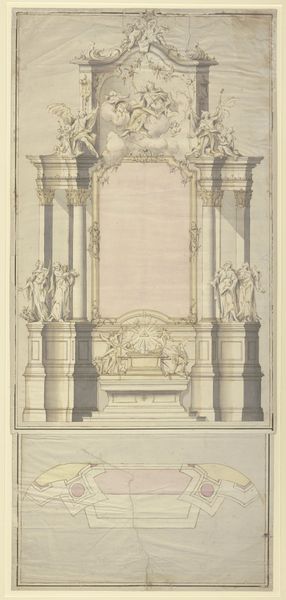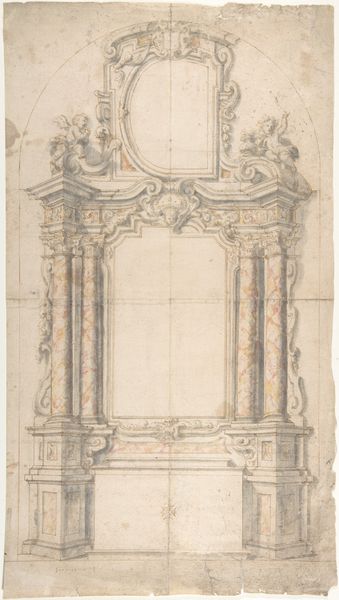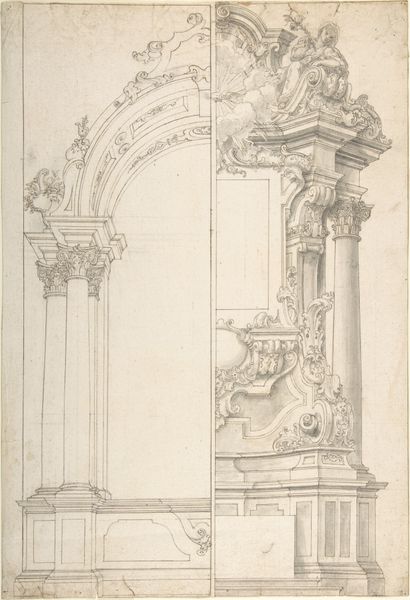
Two One Half Variants of a Design for Painted Wall Decoration with Arch and Perspective View Inside (recto). Negligible diagrams and compass drawn circle (verso). 1700 - 1780
0:00
0:00
drawing, print, watercolor, pencil, architecture
#
drawing
#
baroque
# print
#
perspective
#
watercolor
#
geometric
#
pencil
#
history-painting
#
architecture
Dimensions: sheet: 21 x 15 1/8 in. (53.3 x 38.4 cm)
Copyright: Public Domain
Editor: This drawing, "Two One Half Variants of a Design for Painted Wall Decoration" from sometime between 1700 and 1780 by an anonymous artist, features pencil, watercolor, and print on paper. The architectural details are stunning but give me a sense of being trapped by their symmetry and order. How do you interpret this work? Curator: I see here an articulation of power and control, prevalent during the Baroque era. Consider the role of perspective: it was a tool to project authority, defining space according to the desires of those in power, largely the aristocracy, and religious orders. Editor: So the beauty of the design serves a specific ideology? Curator: Precisely. The geometric precision and overwhelming ornamentation reflect an impulse to impose order onto the world, suppressing anything deemed irregular or chaotic. The question we must ask is, who benefitted from such controlled visions of space? Whose perspectives were excluded in the making of such grandiose designs? Editor: It makes me rethink the intention behind such elaborate structures. Did ordinary people ever feel at home in such environments? Curator: That's a key point. Architectural drawings like this weren't just about aesthetics, they dictated social interactions, reinforcing class distinctions, and shaping the experience of public and private space. How can we deconstruct these power dynamics today? Editor: It's fascinating to see how artistic choices in architecture influenced the social structure. I’ll certainly think about art’s connection to societal power differently now. Curator: Indeed. By critically examining historical representations, we can begin to challenge and reshape current spaces to be more equitable and inclusive.
Comments
No comments
Be the first to comment and join the conversation on the ultimate creative platform.
